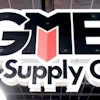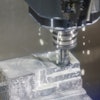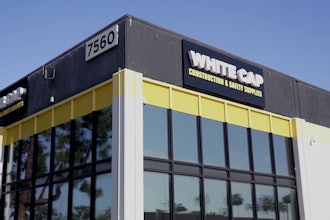
There’s been a lot of buzz about the reshoring of American manufacturing business that had previously been lost to other regions. The talk seems to center on three areas:
 Is reshoring actually happening?
Is reshoring actually happening?
- Are we really going to make up for all the jobs lost to countries with lower-cost labor, primarily India and China?
- What can we learn from success stories in order to achieve more reshoring?
Reality or Wishful Thinking?
Virtually all analysts agree that, yes, many American manufacturers have been successful in bringing some previously lost business back home. But it’s happening at a slower pace than the industry had hoped. According to Henry Moser, the founder of the national Reshoring Initiative, the actual rate of reshoring is somewhere between a trickle and torrent.
At the Reshoring Summit in Cleveland in March, business and economic leaders discussed why the movement has been so slow. Moser explained that 50,000 jobs returned to the United States from 2009 to 2012. While that doesn’t make much of a dent in the total jobs lost during previous years, it’s a move in the right direction. Five years ago, the number of jobs coming back was close to zero.
Also, those 50,000 reshored jobs represent about 10 percent of all U.S. manufacturing jobs created over the last three years. Experts believe the trend will continue and that percentage will increase.
Why Now?
Industry insiders have been talking about reshoring for years. But progress has come only recently. The stars have aligned because at the same time that U.S. manufacturing has come back with new strengths, the business benefits of offshoring have dwindled. Here are the three main factors that have opened the window for more reshoring:
1. Labor rate differences are shrinking.
While labor rates in India and China were far lower than rates in the United States a decade ago, that gap is continuing to narrow. Labor rates have been rising in Asia, while they have remained steady or have decreased across the United States.
2. Escalating oil prices.
Cost increases for shipping long distances are eating away at the benefits of offshoring. And the effects increase exponentially across complex global supply chains.
3. U.S. productivity improvements.
Worker productivity is hitting record highs in the United States, overcoming the (narrowing) cost benefits of producing in low-wage countries.
Technology Drives Productivity Improvements: What can be done to kick-start or accelerate reshoring efforts?
Unlike labor rates and oil prices, which are often outside the control of the individual businessperson, productivity is the manufacturer’s silver bullet. As today’s manufacturers reshape themselves, increased productivity is their mantra. They’re on the right track.
Also, many technology innovations have been introduced since the late ’90s to help boost productivity. Many leading manufacturers have already adopted automation, barcoding, and cloud ERP technology to streamline processes, eliminate unnecessary manual activities, improve quality, save costs and speed product deliveries. More companies are embracing these new technologies every day.
Cloud-Driven, Uniquely American Differentiators
The use of cloud technology is growing at a particularly fast pace. Tens of thousands of manufacturers are switching from legacy on-site systems to cloud-delivered solutions every year — and not just to manage typical ERP operations like finance and accounting, but all functions, including production, quality and more.
They have found that cloud technology improves overall productivity through:
- Better shop floor controls
- Production visibility
- Streamlined processes
- Ease of reporting
- More flexibility
While these benefits improve the overall performance of any manufacturer, they are especially useful for companies that are targeting business lost to offshoring a few years back. They serve as “uniquely American” differentiators — advantages that customers cannot get from their low-cost offshore suppliers.
Because of this, cloud technology has played a key role in many reshoring success stories.
For example, within just one year of launching a cloud-delivered solution, Michigan-based electronics manufacturer Firstronic doubled its revenue and reshored contracts that equate to a 300 percent growth in business. The cloud technology also doubled Firstronic’s inventory turns, which means that when the new contracts are fully operational, the manufacturer will maximize its cash flow and increase its profitability.
Technology Inspires Confidence
As American manufacturers continue their efforts to reshore more business, they would be wise to invest in proven technology, and then tout their increased productivity and other differentiators.
Like Firstronic, they will deliver the proven results and garner the confidence needed to bring manufacturing contracts — and jobs — back to America.
Jim Shepherd serves as vice president of strategy, responsible for defining strategic direction of Plex Systems with manufacturers across multiple industries and global markets. Shepherd brings 40 years of leadership in manufacturing and technology. Prior to joining Plex Systems, Shepherd served as vice president and distinguished analyst for Gartner Inc., the world’s leading information technology research company. Among his many accomplishments, Shepherd was named the first AMR research fellow. Shepherd holds a Bachelor of Arts degree in literature from Wesleyan University in Middletown, Conn.


















